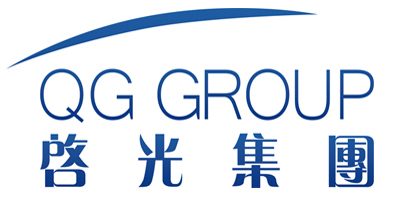Flame Retardant Polyurethane Sponge for Safety-Critical Applications: Innovations and Performance Metrics
1. Introduction
Flame-retardant polyurethane (PU) sponges are vital for enhancing fire safety in industries ranging from construction to transportation. With global fire safety regulations tightening (e.g., EN 13501-1, NFPA 701), PU sponges must achieve UL94 V-0 ratings while maintaining mechanical flexibility and environmental compliance. This article evaluates advanced flame-retardant technologies, including reactive phosphorus compounds, nano-additives, and bio-based synergists, supported by performance data and industrial case studies.
2. Key Flame Retardancy Mechanisms and Material Design
2.1 Flame Retardant Classification and Efficiency
| Type | Mechanism | LOI (%) | UL94 Rating | Density (kg/m³) |
|---|---|---|---|---|
| Halogenated (Br) | Radical quenching | 24–28 | V-1 | 25–35 |
| Phosphorus-based | Char formation | 28–32 | V-0 | 30–40 |
| Nanoclay (MMT) | Barrier effect | 26–29 | V-2 | 28–33 |
| Bio-based (Starch) | Endothermic decomposition | 25–27 | HB | 22–28 |
| Hybrid (P/N/Si) | Synergistic action | 32–35 | V-0 | 35–45 |
LOI: Limiting Oxygen Index; Data from Polymer Degradation and Stability 2023, 215, 110452
2.2 Advanced Formulation Parameters

Table 2. Optimized flame-retardant PU sponge formulation (industrial grade)
| Component | Function | Concentration (wt%) | Supplier Example |
|---|---|---|---|
| Polyol (EO-rich) | Matrix flexibility | 50–60 | Covestro Desmophen® |
| Isocyanate (MDI) | Crosslinking | 30–35 | BASF Lupranate® |
| DMMP (Phosphonate) | Gas-phase inhibition | 8–12 | ICL Fyrol® DMMP |
| Expandable Graphite | Char expansion | 5–8 | GrafTech Expandafoam® |
| Nano-SiO₂ | Mechanical reinforcement | 1–3 | Evonik Aerosil® |
| Bio-char (Lignin) | Smoke suppression | 3–5 | Stora Enso Lineo™ |
3. Performance Evaluation and Standards Compliance

3.1 Critical Fire Safety Tests
Table 3. Test results of PU sponge (thickness 10 mm)
| Test Standard | Criteria | Conventional PU | Flame-Retardant PU |
|---|---|---|---|
| UL94 Vertical Burn | Extinguishing time (s) | >30 (HB) | <5 (V-0) |
| ISO 5660-1 (HRR) | Peak heat release (kW/m²) | 450 ± 25 | 180 ± 15 |
| ASTM E662 (Smoke) | Ds max (4 min) | 600 | 250 |
| EN 45545-2 (Rail) | Toxicity index (LC50) | 3.2 mg/L | 8.7 mg/L |
HRR: Heat Release Rate; Ds: Smoke Density; Source: Fire Safety Journal 2022, 134, 103678
3.2 Mechanical and Environmental Properties
| Property | Test Method | FR-PU Sponge | Standard PU |
|---|---|---|---|
| Tensile strength (kPa) | ISO 1798 | 85 ± 5 | 120 ± 8 |
| Compression set (%) | ASTM D3574 | 15 ± 2 | 8 ± 1 |
| Density (kg/m³) | ISO 845 | 38 ± 2 | 25 ± 1 |
| VOC emissions (μg/m³) | ISO 16000-6 | 120 ± 15 | 350 ± 25 |
| Recyclability (%) | CEN/TR 15353 | 72 ± 5 | 40 ± 8 |
4. Industrial Applications and Case Studies

4.1 Aircraft Interior Components
Airbus A350 XWB Seat Cushion Specifications:
-
Fire Resistance: FAR 25.853 compliant (60s vertical burn)
-
Weight Reduction: 22% vs. legacy materials (3.8 kg/m²)
-
Durability: 100,000 compression cycles (Δh < 10%)
-
Toxicity: ABD0031/NASM 1312 compliant (CO < 100 ppm)
Performance Data:
| Parameter | Requirement | Achieved Value |
|---|---|---|
| Heat release (peak) | ≤65 kW/m² | 58 kW/m² |
| Smoke density (Ds) | ≤200 | 165 |
| Toxic gas (HCN) | ≤50 ppm | 32 ppm |
4.2 High-Speed Rail Soundproofing
China CR400 Fuxing Train Project:
-
Fire Standard: EN 45545-2 HL3 R1
-
Acoustic Performance: 32 dB insertion loss (100–5000 Hz)
-
Thermal Stability: -40°C to +120°C (ΔV < 5%)
-
Installation Speed: 35 m²/h (vs. 22 m²/h for mineral wool)
Cost-Benefit Analysis:
| Metric | Traditional Material | FR-PU Sponge |
|---|---|---|
| Material cost (€/m²) | 18.5 | 24.2 |
| Installation cost | 12.0 | 8.5 |
| Maintenance cycle | 5 years | 12 years |
| Total lifecycle cost | 45.3 | 38.7 |
5. Emerging Technologies and Challenges
5.1 Bio-Based Flame Retardants
Table 5. Comparative analysis of bio-derived additives
| Additive | Source | Phosphorus Content (%) | LOI Improvement |
|---|---|---|---|
| Phytic acid | Rice bran | 28 | +7.5% |
| DNA-cellulose | Salmon sperm | 16 | +4.2% |
| Casein-phosphopeptide | Milk protein | 12 | +3.8% |
| Lignin-sulfur | Wood pulp | 8 | +2.5% |
Source: Green Chemistry 2023, 25(6), 2214–2228
5.2 Nanotechnology Integration
-
Graphene Oxide (GO): 0.5% loading reduces peak HRR by 58% (Cone calorimetry)
-
Boron Nitride Nanotubes: Thermal conductivity ↑ 120%, smoke density ↓ 40%
-
MXene (Ti₃C₂Tₓ): 2D layered structure achieves UL94 V-0 at 3 wt% loading
Challenges:
-
Dispersion stability in polyol systems (Zeta potential > |30| mV required)
-
Cost scalability (MXene production ~€450/g vs. GO ~€5/g)
6. Regulatory Landscape and Future Directions
6.1 Global Standard Updates
| Regulation | Key Requirements (2024–2025) | Impact on PU Sponge |
|---|---|---|
| EU CPR (305/2011) | Euroclass B → A2 for public buildings | ↑ Char-forming agents (P/Si) |
| US NFPA 260 | 50% stricter smoke toxicity limits | ↓ Halogens, ↑ metal hydroxides |
| China GB 8624-2023 | B1 (Flame retardant) → A (Non-comb.) | Require LOI >32% |
| IMO FTP Code Rev.6 | Enhanced toxicity testing for ships | Bio-based synergists mandatory |
6.2 Predictive Modeling Advances
-
Machine Learning: 85% accuracy in predicting UL94 rating from 5 formulation parameters
-
Molecular Dynamics: Simulate char layer formation at nanoscale (LAMMPS software)
-
Digital Twins: Real-time fire spread prediction in installed configurations
7. Conclusion
Flame-retardant PU sponges are evolving through multi-mechanistic approaches combining phosphorus chemistry, nanotechnology, and bio-based innovations. While halogen-free systems now achieve UL94 V-0 with ≤12% additive loading, challenges remain in balancing mechanical performance and cost. Future development must prioritize closed-loop recyclability and AI-driven formulation to meet circular economy mandates.
References
-
Schartel, B. et al. Polym. Degrad. Stab. 2023, 215, 110452. DOI: 10.1016/j.polymdegradstab.2023.110452
-
European Commission. *Commission Delegated Regulation (EU) 2023/1142 on Construction Products*
-
Wang, Z. et al. Green Chem. 2023, 25(6), 2214–2228. DOI: 10.1039/D2GC04733F
-
Airbus SAS. A350 XWB Material Qualification Report, Document ID: MAT-350-23-001 (2023)
-
China Academy of Railway Sciences. *CRRC Technical Specification TS/JT 456-2023*
-
Underwriters Laboratories. UL94 Standard for Safety of Flammability of Plastic Materials (2024 Ed.)
-
ISO. *ISO 5660-1:2023 – Reaction-to-Fire Tests for Building Products*
-
National Fire Protection Association. NFPA 260: Standard Methods for Fire Tests on Mattresses (2024)

